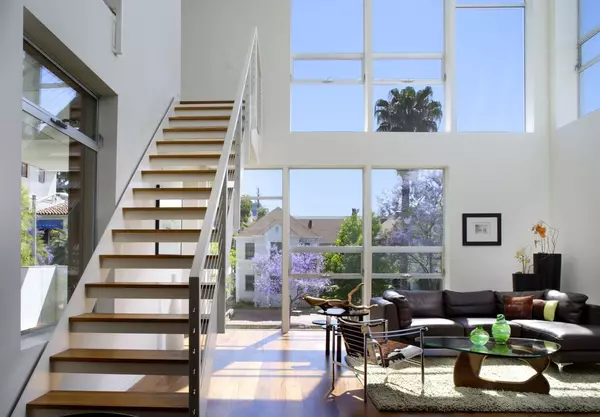What Landlord Insurance in Canada Does (And Doesn’t) Cover
Landlord insurance is a critical tool for protecting rental property investments in Canada, but many landlords don’t fully understand what it actually covers. While it offers broader protections than a standard homeowner policy, it’s not a catch-all solution. There are specific limits, exclusions, and optional add-ons that every landlord should be aware of before assuming they’re fully protected.
Core Protections in a Canadian Landlord Insurance Policy
At its core, landlord insurance is designed to shield property owners from financial loss arising from events that affect their rental units. A basic policy typically includes key coverage for property, liability, contents, and in some specific cases, loss of income.
Property Coverage
This protects the physical structure of the rental property against common perils such as fire, water damage, wind, vandalism, and theft. It also extends to permanently attached structures like garages or sheds. For landlords who provide appliances or furnish the unit, property coverage also applies to those contents, though usually only items owned by the landlord, not the tenant.
Liability Coverage
Liability insurance protects landlords if someone is injured on the property and holds the landlord legally responsible. For example, if a tenant or visitor slips on an icy walkway or falls down the stairs due to a loose railing, liability coverage helps pay legal fees, medical costs, and settlements.
Rental Income Coverage
Also called “fair rental value” coverage, this part of the policy replaces lost rental income if the property becomes uninhabitable due to a covered loss, such as a fire or major water leak. It ensures a landlord can still meet mortgage payments or operating costs even if tenants must temporarily move out.
Equipment and Contents Coverage
If your property includes appliances, HVAC systems, or other equipment necessary for operation, landlord insurance may cover repairs or replacement in the event of mechanical or electrical failure. It can also apply to non-permanently attached items like stoves or fridges.
Zensurance offers policies covering these basic areas, with optional add-ons to more fully meet the needs of landlords.
Types of Properties Eligible for Coverage
Landlord insurance providers in Canada may offer coverage for a broad range of rental types. Zensurance, for example, offers:
- Single-family homes
- Semi-detached homes
- Duplexes and flats
- Condos and stratas
- Apartments and rooming houses
- Seasonal rentals or cottages
Each type comes with different risk profiles, so policy customization is essential.
The Gaps: What Landlord Insurance Doesn’t Cover by Default
While the core coverage is beneficial, many landlords overlook the exclusions that can lead to costly gaps in protection and other issues.
Tenant Property Is Not Covered
Landlord insurance does not include coverage for tenants’ personal belongings. If a fire or flood damages their possessions, tenants must rely on their own renters’ insurance. Landlords should clearly communicate this to tenants.
Routine Maintenance and Wear and Tear
Insurance is designed for sudden and accidental losses, not for gradual deterioration. If a roof leaks due to old age, or plumbing fails due to corrosion, the repair costs are typically out of pocket. Preventive maintenance remains the landlord’s responsibility.
Intentional or Criminal Damage by Tenants
Unless your policy specifically includes coverage for malicious or intentional damage, insurers may deny claims involving tenant-caused destruction. This is an important exclusion, particularly for landlords managing units with frequent turnover or minimal screening.
Vacancy-Related Risks
Properties left vacant for extended periods, typically over 30 days, may lose full coverage unless the insurer is notified and proper precautions are taken. Special vacancy permits or endorsements are often required.
Optional Coverage Landlords Should Consider
To address these gaps, Canadian insurers offer several valuable add-ons. Depending on the property’s location and condition, landlords should consider extending coverage to address some important risks.
Overland Water Insurance
This protects against damage caused by flooding from freshwater sources, such as heavy rain, snowmelt, or overflow from nearby rivers.
Sewer Backup Insurance
Covers the cost of cleaning and repairing damage caused by raw sewage entering the property through drains, toilets, or septic systems, which can be a common issue, particularly in older urban infrastructure.
Earthquake Insurance
Especially important for properties in seismically active regions like British Columbia, this add-on covers structural and contents damage caused by earthquakes, which are excluded from most base policies.
Legal Expense Insurance
This increasingly popular endorsement covers legal fees for disputes with tenants, including in cases involving eviction or unpaid rent. Some policies include access to 24/7 legal advice to help landlords understand their rights across provinces.
Zensurance helps landlords customize their insurance coverage to match the specific needs of their rental properties, offering optional add-ons for enhanced protection.
Know Your Policy and Its Limits
Landlord insurance is essential for anyone renting out a property in Canada, but relying on a basic policy can leave you exposed. In many cases, add-ons are worth the extra cost for long-term, comprehensive financial protection. Before signing or renewing your policy, review it carefully and consider whether your current coverage reflects the true risks of being a landlord. From liability to rental income loss to water damage and legal disputes, the right combination of coverage can make the difference between a manageable loss and a financial crisis.
Zensurance offers landlord insurance tailored to the needs of Canadian rental property owners, with plans starting as low as $19/month and flexible add-ons to close the gaps standard coverage leaves behind.
* Issuance of coverage is subject to underwriting by the respective insurance company. The final insurance premium is established, and insurance coverage is offered by the insurance company only after underwriting is completed.
** Please note this article contains affiliate links. We may receive compensation for referrals and purchases made through these links.
Recent Posts










